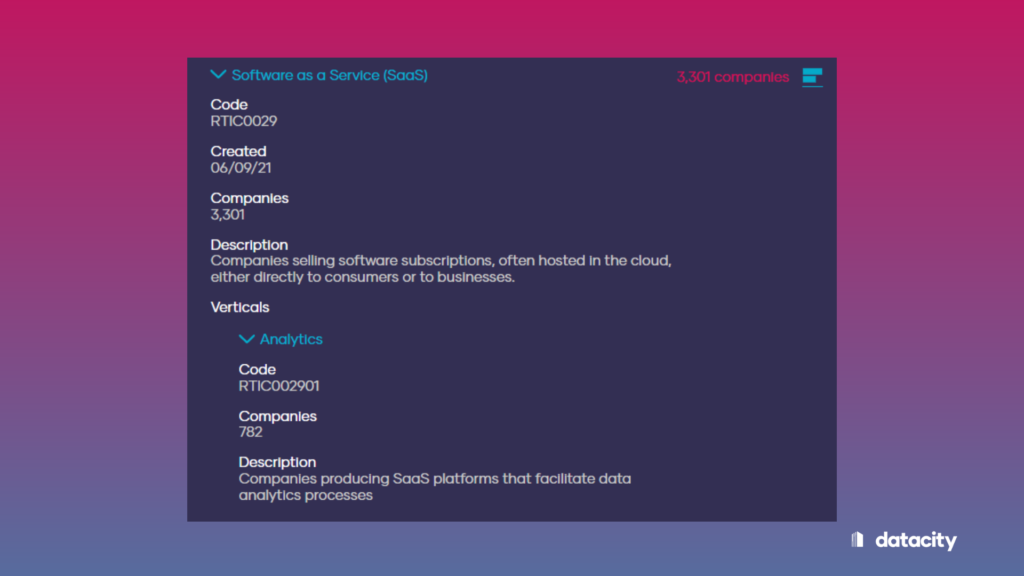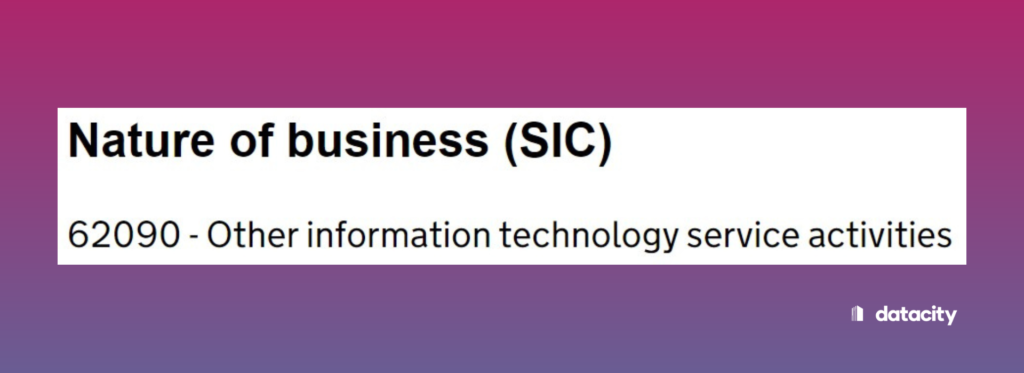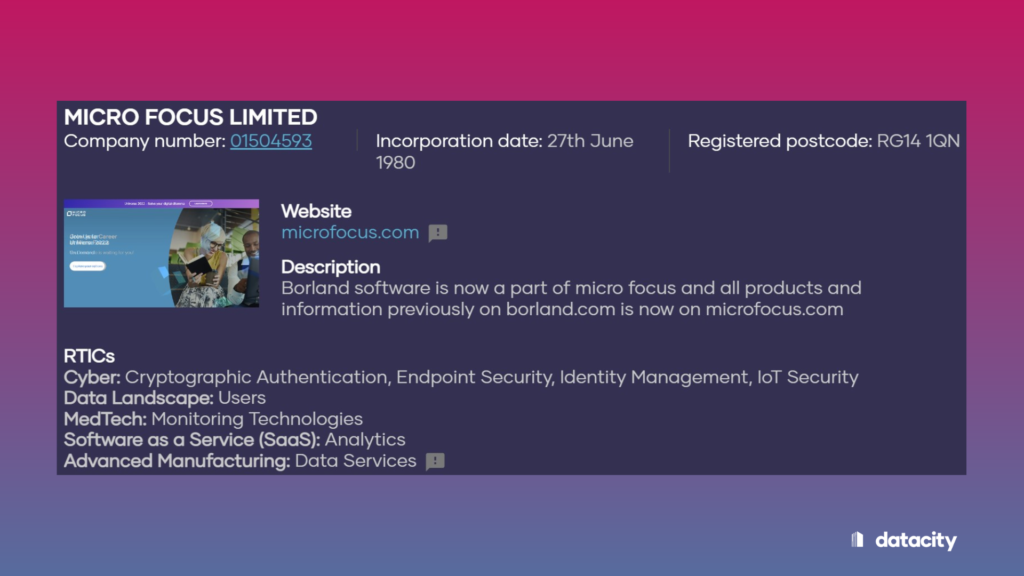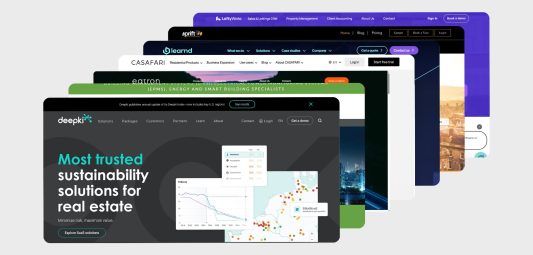SIC codes are plagued with many different problems – perhaps one of the biggest is the “other” section.
For those that may not know, Standard Industrial Classifications (or SIC codes) are the system used by the UK government to classify all companies into many different categories. These haven’t been updated since 2007, meaning many critical parts of the economy are not represented. Everything from financial tech companies to digital marketing is not covered, leading many businesses to have to classify themselves under the “other” category. Learn more about SIC codes in our in-depth article.
The problem: “Other” isn’t specific enough
Anyone trying to use data where “other” is in the majority is going to have a very hard time finding anything of value. This is self-explanatory, but not being able to distinguish what one company does from another (the whole point of SIC) is useless from a data analysis standpoint.
A great example here is the Kalifa review of UK FinTech – it predicted that there were 1,600~ FinTech companies within the UK (going off SIC data), however it was clearly stated that this was not accurate due to the unreliability of SIC data. It was said that there could be up 50% more companies than they found!
The second problem is that the “other” section is simply the easiest place to put your company. Why would you deliberate over which SIC code describes your company best when the get-out-of-classification free card is so easy to choose? Over 30% of companies have done this and it is absolutely not their fault. SIC hasn’t been updated since 2007 – 15 years’ worth of new and emerging industries that have been left in the “other” pile; it’s no wonder these piles are starting to become too big to ignore.
All this cascades into the “other” SIC code for any given industry being a wild west of different companies.
“ Over 50% of FinTechs are unable to classify themselves using the current Standard Industrial Codes (SIC 2007).
It can be an effective way of grouping minorities together to present data in a more cohesive and easily digestible way. A good example here would be election results. The main candidates take the spotlight in the data, while candidates with significantly fewer votes could be grouped together to create an “other” section. The data for the section exists, but it is condensed for clarity’s sake. The problem comes when the groups making up the “other” section are unidentifiable and/or the section starts to make up a majority of the data.
SIC codes have both problems.
The answer: Real-Time Industrial Classifications

SIC codes are and always have been static entities. They cannot adapt easily to change in the current industries, never mind new industries entirely. In the new economy, both of these are a must as there is so much innovation and new technology that new sectors crop up all the time. The easiest thing to do in such a situation is to simply create a catch-all category for all the companies that don’t quite fit anywhere – the “other” section.
Real Time Industrial Classifications (or RTICs) are The Data City’s proprietary system for classifying companies in real time. They fix SIC’s problems by being far more free flowing than SIC, allowing for the addition of subsectors whenever needed and (re)classification of companies that is done through machine learning. Due to the automatic nature of RTICs, the company themselves are never given the get-out-of-classification free card in the first place, which eliminates the “it’s the easiest place to put the company” mentality. In addition, the free-flowing nature of verticals means that if a company does not have a suitable classification, then different verticals can be added within the relevant RTIC with relative ease.
Put this together and you find that there is no place for “other” categories in RTICs; not when we are trying to provide the most accurate data we can.
Why “other” doesn’t work
Micro Focus are an international company that handles all sorts of different products and services, from analytics and big data to team and endpoint management to cloud solutions. What SIC do you think they are under? That’s right, “62090 – Other information technology service activities”. One could make the argument that this makes sense seeing as how they provide services for so many different industries, however this argument would be flawed. They should be classified for everything they do and not none of it.

SIC 62090 has such a varied number of different companies (83,796!) that being classified under this code means almost nothing. It could be social media companies, cyber security companies or banking companies; almost any type of company you can think of would fit in this category.
If you were to try and find companies like Micro Focus by going about it the logical way of searching for others in the same SIC code, you would find a horrendous mismatch of all kinds of different companies.
A quick example

These are the RTICs that Micro Focus are currently classified as. The improvements from SIC are obvious. These RTICs describe exactly what Micro Focus do, in every industry that they are in; a very significant improvement over what SIC gave us. From here, we can find other companies that specialise in all or some of the same places as Micro Focus does. SIC gave us nothing in this regard.
If you were trying to find companies like Micro Focus using the RTIC structure, you would be able to find every company that provides similar services for one or all of the RTICs and be provided with a list of every UK company like this. The more the list is refined the more accurate the data will be.
What’s next for SIC codes?
As has been demonstrated, the data available from RTICs is infinitely better than that of SIC codes due to the refusal to use catch-all categories such as “other”. In today’s economy, there is more and more demand for accurate data. SICs are far too rigid to provide this with all the growing industries and new technology. We need something that can grow and expand with the economy. RTICs are the answer: as flexible and specific as is needed, with room to grow as the economy expands even further.
If you would like to talk to us about RTICs and the solutions we provide, the feel free to contact us.


